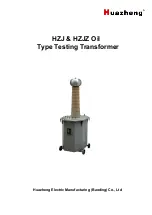
Configuration
© Rice Lake Weighing Systems
●
All Rights Reserved
11
To calibrate the instrument, the theoretical calibration (
) must be completed first. After
theoretical calibration is set, the scale can be set with actual weights (
).
0.50000-
7.00000
Sensitivity – a load cell rated parameter expressed in mV/V; set the average sensitivity value indicated on the load cells
Example of 4-cell system with sensitivity
2.00100, 2.00150, 2.00200, 2.00250;
enter 2.00175,
calculated as (2.00100 + 2.00150 + 2.00200 + 2.00250) / 4.
1
2
5
10
20
50
100
0.0001
0.0002
0.0005
0.001
0.002
0.005
0.01
0.02
0.05
0.1
0.2
0.5
Division (resolution) – is the weight increment (display division size) that the scale counts by.
Settings: 0.0001 and 100 with x1 x2 x5 x10 increments.
max full scale
Maximum Capacity (Live Load/Product) – that can be displayed; when the weight exceeds this value by 9 divisions, dashes
display, indicating overload; setting this value to 0 disables the over capacity function.
0
Zero – used to capture the deadload of the scale system; with the scale empty, the displayed value can be zeroed off; this
menu can also be accessed directly from the weighing mode to compensate for zero changes or variations;
Press to display the accumulated deadload weight that has been zeroed off.
Estimated Dead Load Value – of the scale when a scale contains product that cannot be removed; the value entered is the
dead load; this value is replaced if the zero function is performed
Weight (Span) Calibration – after the theoretical calibration is complete and zero is set, the calibration can be adjusted with
actual test weights by changing the displayed value in this parameter
NOTE: If changes are made to the theoretical Full Scale (
), the Sensitivity (
) or Divisions (
) parameters, the Weight (Span) Calibration is canceled and the theoretical calibration is initiated and
applied.
NOTE: If the theoretical full scale (
) and the capacity full scale (
) are equal in Weight (Span)
Calibration (
), then the calibration currently in use is theoretical. If they are different, the calibration in
use is the Weight (Span) Calibration based on calibration weights.
NOTE: If changes are made to the theoretical full scale (
), the capacity full scale (
) or divisions
(
) parameters, all the system’s parameters containing a weight value will be set to default values
(setpoints, hysteresis, etc.).
Unit of Measure – determines the unit of measure to be displayed and printed.
Multiplier Value – if entered, displays an alternative unit of measure if digital input is set for COEFF and is in a closed state
Parameter
Options
Description
Table 2-2. Calibration Menu Parameters (Continued)
Note
















































